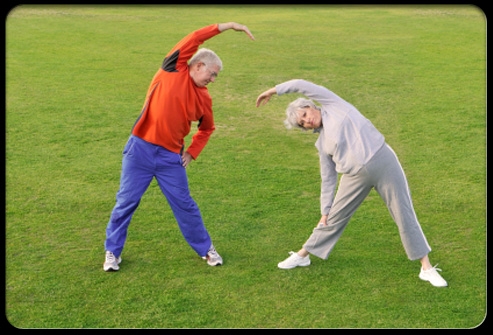Arthritis is a leading cause of pain and disability worldwide. You can find plenty of advice about easing the pain of arthritis and other conditions with exercise, medication and stress reduction. How do you know what will work best for you?
Here are some do's and don'ts to help you figure it out.
Basics
Whatever your condition, it will be easier to stay ahead of your pain if you:
- Talk to your doctor about your symptoms, arthritis related or not. Sometimes seemingly unrelated problems are, in fact, connected.
- Give your doctor complete information about your medical conditions and medications, including over-the-counter medications and supplements.
- Ask your doctor for a clear definition of the type of arthritis you have.
- Find out whether any of your joints are already damaged.
Everyday routines
Do some gentle exercise in the evening; you'll feel less stiff in the morning. When you're sitting still, either watching TV, reading or working at your desk, be sure to:
- Adjust your position frequently.
- Periodically tilt your neck from side to side, change the position of your hands, and bend and stretch your legs.
- Pace yourself. Take breaks so that you don't overuse a single joint and cause more pain.
- Stand and walk around every half-hour or so.
In addition, lifestyle changes are important for easing pain.
- Manage weight. Being overweight can increase complications of arthritis and contribute to arthritis pain. Making incremental, permanent lifestyle changes resulting in gradual weight loss is often the most effective method of weight management.
- Quit smoking. Smoking causes stress on connective tissues, which leads to more arthritis pain
Exercise
When you have arthritis, movement can decrease your pain, improve your range of motion, strengthen your muscles and increase your endurance.
 What to do
What to do
- Choose the right kinds of activities — those that build the muscles around your joints but don't damage the joints themselves. A physical or occupational therapist can help you develop an exercise program that's right for you.
- Focus on stretching, range-of-motion exercises and gradual progressive strength training.
- Include low-impact aerobic exercise, such as walking, cycling or water exercises, to improve your mood and help control your weight.
What to avoid
Avoid activities that involve high impact and repetitive motion, such as:
- Running
- Jumping
- Tennis
- High-impact aerobics
- Repeating the same movement, such as a tennis serve, again and again
Medications
What to do
- Take medications. Over-the-counter pain medications, such as acetaminophen (Tylenol, others) or ibuprofen (Advil, Motrin IB, others), can help relieve occasional pain triggered by activity your muscles and joints aren't used to — such as gardening after a winter indoors.
- Topical analgesics. Cream containing capsaicin may be applied to skin over a painful joint to relieve pain. Use alone or with oral medication.
Consult your doctor if over-the-counter medications aren't enough to relieve your pain.
What to avoid
- Overtreatment. Talk with your doctor if you find yourself using over-the-counter pain relievers regularly.
- Undertreatment. Don't try to ignore severe and prolonged arthritis pain. It may mean you have joint inflammation or damage requiring daily medication.
- Focusing only on pain. Depression is more common in people with arthritis. Doctors have found that treating depression with antidepressants and other therapies reduces not only depression symptoms but also arthritis pain.
Physical and emotional integration
What to do
Therapies that interrupt destructive mind-body interactions include:
- Cognitive behavioral therapy. This well-studied, effective combination of talk therapy and behavior modification helps you identify — and break — cycles of self-defeating thoughts and actions.
- Relaxation therapy. Find ways to relax. Meditating, doing yoga, deep breathing, listening to music, being in nature, writing in a journal — whatever works for you. There's no downside to relaxation, and it can help ease pain.
- Acupuncture. Some people experience pain relief through acupuncture treatments, when a trained acupuncturist inserts hair-thin needles at specific points on your body.
-
Heat and cold. Use of heat, such as applying heating pads to aching joints, taking hot baths or showers, or immersing painful joints in warm paraffin wax, can help relieve pain temporarily. Be careful not to burn yourself. Use heating pads for no more than 20 minutes at a time.
Use of cold, such as applying ice packs to sore muscles, can relieve pain and inflammation after strenuous exercise.
- Massage. Massage may improve pain and stiffness. Make sure your massage therapist knows you have arthritis and where.
What to avoid
- Smoking. If you're addicted to tobacco, you may use it as an emotional coping tool. But it's counterproductive: Toxins in smoke cause stress on connective tissue, leading to more joint problems.
- A negative attitude. Negative thoughts are self-perpetuating. As long as you keep dwelling on them, they keep escalating until you believe the worst. Using negative thoughts to cope with pain can actually increase your risk of disability and pain. Instead, focus on adaptive therapies like distraction or calming statements.
Source: mayoclinic.org







